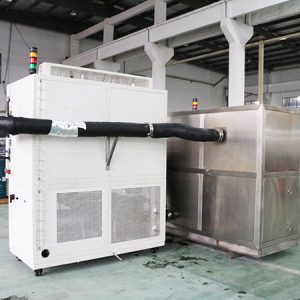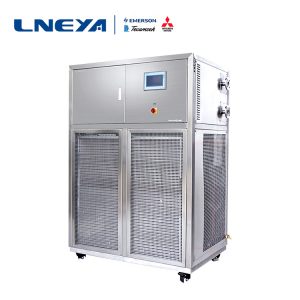Troubleshoot the main points of failure of the high and low temperature cooling system
When the industrial high and low temperature cooling system is in use, what is the general reason if the temperature cannot drop down? How should we deal with such failures?
Let’s first analyze the principles and methods of industrial cooling. The circulating heat transfer medium is different. Generally, the high and low temperature cooling system industry mostly uses direct cooling, while indirect cooling is used, with plate heat exchangers or oil coolers installed inside. In other devices, the heat medium and cooling water source in the system exchange heat in the heat exchanger to reduce the temperature of the medium.
The temperature of the high and low temperature cooling system cannot be reduced. Generally, we conduct inspection and maintenance from the following aspects:
1. A válvula solenoide de arrefecimento está danificada: é necessário verificar se a bobina da válvula solenoide pode funcionar normalmente, se estiver danificada, tem de ser substituída; o painel não emite um sinal de arrefecimento, verificar cuidadosamente o circuito ou utilizar o método de substituição de componentes para verificar.
2. Circuito de falha do circuito: Verificar a parte do circuito do sistema, a tubagem de entrada ou de saída da água de arrefecimento está bloqueada: verificar se a válvula na tubagem da água de arrefecimento está totalmente aberta e assegurar que o fluxo e a pressão da água de arrefecimento são suficientes, e o contactor de aquecimento está preso, Aquecer sempre: observar o estado de arranque do contactor e piorar as peças eléctricas danificadas.
In addition to troubleshooting the above two possible causes of failure, we also need to check whether the cooling plate is replaced or the cooling exchanger is blocked.
The advantage of using indirect cooling is that it has high temperature control accuracy and strong adaptability. It can be applied to the temperature control of high and low temperature cooling system industries. And because the heat transfer medium is cooled first, the cooling impact on the temperature control equipment is relatively small. Of course The disadvantage is that the cooling speed is relatively slow, and the price is more expensive than direct cooling.
Recomendações relacionadas
-
Método de inspeção do dispositivo de ensaio ambiental de célula de combustível comum
1953Durante o processo de arrefecimento do dispositivo de ensaio ambiental de célula de combustível, existe a possibilidade de pingar no interior. Não se trata de um fenómeno normal utilizado pelo dispositivo de ensaio ambiental das pilhas de combustível, mas sim de uma instalação incorrecta. Depois de o dispositivo de teste ambiental...
Ver detalhes -
Heat sink temperature application note
1722As we all know, the semiconductor industry has certain characteristics, small size, high reliability, wide working range, and has a wide range of applications in the civilian, industrial and other fields of semiconductors, but with the increasing ...
Ver detalhes -
Como escolher um refrigerador a laser?
2002O termo laser é um acrónimo de amplificação da luz por radiação estimulada. Quando os electrões dos átomos dos materiais ópticos (como o vidro, o cristal ou o gás) absorvem a energia da corrente, é gerado um laser. O aumento da energia excita...
Ver detalhes -
Que tipo de refrigerador é necessário para a gravação a baixa temperatura?
1414The low-temperature etching process usually requires extremely high precision temperature control and strong cooling ability to maintain stable operation of the etching equipment at extremely low temperatures, in order to achieve finer etchi...
Ver detalhes
 LNEYA Refrigeradores industriais Fabricante Fornecedor
LNEYA Refrigeradores industriais Fabricante Fornecedor














